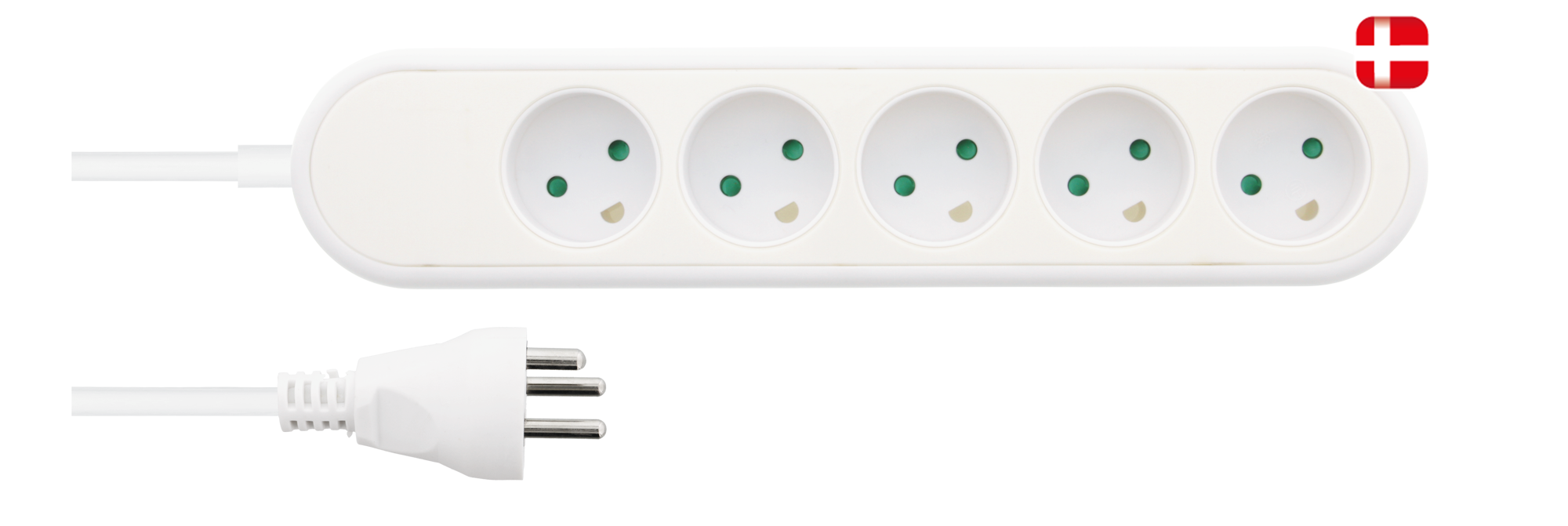This is a debate, not an argument, let’s be adults about this. [Insert political joke]
L5-20 and L6-30
https://en.wikipedia.org/wiki/Schuko

I’ve used many plugs and in my opinion, the schuko plug is the one that makes the most sense.
-
Reverse Polarity (can’t use it the wrong way, and you can turn it in case some power adapted is in the way)
-
also the symmetry makes it look more pleasing
-
only 2 pins stick out (the ground is in the body, 2 pins are a reduced area of failure in case you drop it.
-
very good and secure fit
also it looks like a cartoon plug which is fun. However, the minified version that companies make to go in these plugs is truly awful
And as every child here knows, you can just plug it into a pig nose for mobile power. No need for noisy generators, just bring your pig.
This is my favorite too!
-

I just wanted to throw the AU/NZ plug into the mix since nobody is really talking about it. I don’t have enough knowledge about this kind of thing to really have a take on it, but I’m interested to get an international perspective.
Pros:
- not as big as the UK plug
- not an American plug
- those power cords that stick out at a diagonal parallel to the wall
Cons:
- no inbuilt fuses
- no inbuilt guard on the socket
- every plug and socket feels cheap.
- thin shitty pins that bend easily
- shitty sockets that break when shitty bent pins get plugged into them.
- used by a handful of people with tight regulations … and China. Good luck getting decent affordable, certified, smarthome sockets.
- that cunt who invented the vertically oriented twin socket wall unit. What a fuckhead.
- those power cords that stick out perpendicular to the wall.
Ghostface!
I don’t know why I never made that association before, but now I can’t unsee it.
It gets better with the switches as they look like a high ghost

It’s better than the US one, but it’s just worse compared to the European ones. It’s hard to get them aligned in the dark/behind furniture, but at least it won’t fall out by itself.
For some strange reason that’s used in Argentina also. Not sure why here the ground is the same length than the others, though.
I just mentioned NZ/AUS plus, probably as you were typing ;)
Hah. Yeah, I definitely prefer the size over UK plugs. It feels wrong to me to have a 230v wall voltage without a blanket requirement for earthing, but as I said, I don’t know enough about it. I’m quite open to being wrong about that.
The main thing that should get adopted everywhere is having fuses or breakers in the plugs themselves. That would eliminate a lot of fires caused by putting too much current through small wires.
I also like the outlets (like in the UK and probably other places) that won’t unlock the mains slots until there’s a ground pin in place.
I also like the outlets (like in the UK and probably other places) that won’t unlock the mains slots until there’s a ground pin in place.
That’s… most places. Or better, they don’t open unless you push in both prongs at the same time
I don’t care for the one that require both mains pins go in at the same time. That’s what we have most in my area and they are not as smooth as the long ground pin unlocks.
Yeah that’s what I was about to say, that’s… most plugs. Except the really bad ones. Maybe OP is american. 😅 In which case, my condolensces, that plug design is positively cruel.
Want to say that we do have tamper resistant plugs now. They require both pins to go in at the same time.
How does that work for devices you don’t necessarily want ground pins on? eg: toasters
Why would you not want a toaster to be earthed? I can think of loads of devices that would apply to but toasters contain a lot of metal and frequently have metal casings.
You can also always have an earth pin, like type G plugs and sockets, even if it isn’t wired up and is made of plastic.
a plastic earth pin like this
If the toaster has a metal chassis, you DEFINITELY want that earthed, since any failure where the element or live hits the chassis will instantly trip the RCD/Ground protection whatever you guys call it. But, for devices that really don’t need a proper earth, we just put a plastic earth pin connected to nothing in the plug.
That would eliminate a lot of fires caused by putting too much current through small wires.
The counterpoint to this would be: Why have the fuse in the plug (where the plug necessarily becomes bulkier and hence easier to break or harm someone by stepping on it, especially because the UK plug design means the points orient upwards on average) when you can have it in the device instead?
Moreover, why go the step of putting millions and millions of fuses into millions of millions of plugs instead of much fewer fuses on lines in homes? If you got to decree a fuse to stop overcurrent on the cable in the wall, put the fuse where you’re trying to use it.
(I’m not against fuses in all plugs, I’m just saying it’s easy to make counterarguments that it’s both impractical and also the wrong solution to the problem)
The benefit of the fusebin the plug is you can have a 1A fuse for a 1A appliance with a cable rated for 1A, and plug it into a socket rated for 10A.
If the appliance faults, then the wire doesnt catch fire.
If you dont have that, then all the wires have to be rated to 10A (or whatever the rating is).
And thats based on 1-breaker-per-socket.If you have 2 sockets close to eachother on the opposite side of the house than the breaker panel, its easier and cheaper to wire them both together on 20A cable and a single 20A breaker. The fuses in the plug protect the 10A cable to the appliance, the 20A breaker protects the 20A cable in the wall.
Yes, you could put a fuse in the appliance (a lot have this).
But that isnt convenient for lamps, where it might be bulky to include a fuse holder and ruin the aesthetic.
Or something that deals with water, like submersible pumps or kettles.
Also, some appliances have swappable cables (IEC C13 for example). So if the appliance has an internal 10A fuse but is used with an IEC cable rated to 5A then it leaves the cable unprotected and a possible fire hazard.The plug is also a good place to put it regulatory speaking as it means no manufacturers needs to change device designs, they just need to buy different cords. And it does not mean the plug has to be huge the way it once did. Most people in the US don’t even notice that there are fuses in the christmas light plugs. And I had a desk heater once that used an automotive fuse; it mean most of the plug was fuse but it was still built into ano therwise standard NEMA 1-15 plug.
Fuses should be required for any power strip that is not rated for 20 A (2.5mm² wires). At least where I live that’s the highest current an outlet circuit can be rated for.
The power strips that cheap out and only put in 1.55mm²/16 A are stupid. For 20 A power strips though, fuses are redundant.Modern European plugs are already plenty safe for “accidental” insertion, you have to push into both holes at the same time for the outlet to “unlatch”.
can we make a new thing? ie, i love what weve been able to do with USB-c as far as standardization… could we make a higher voltage, single plug ‘thing’?
We could but the amount of time that would take would be ludicrous, and that’s if you can convince people to switch. People don’t like change.
Hell, the switch to USB-C isn’t even fully complete. Sure, Apple finally did it after the EU twisted their arm, but some companies still release products with micro USB. Idk if it’s cheaper or what, but it’s definitely annoying.
i think the micro to usb-c is about supply chain. current production needs to run out the supply of the cheaper micro pieces. at some point it will be cheaper to use usb-c than micro and we wont look back.
My uninformed take on this is that its almost impossible because countries have different power standards. Of course i may be entirely wrong, or correct but with an entirely incorrect reasoning. Please people who actually know correct me below
We could make low voltage DC wiring a thing inside homes.
PoE works really well, data and power over a single ethernet cable for various low voltage devices. I have PoE powering network switches, WiFi access points, doorbells, cameras and raspberry pis.
The main problems is high amperage required to get the same wattage and the difficulty to change voltage with dc; coming from someone that has a small workshop running out of 12v dc from solar panels and batteries
It depends on what you’re running, but I used to work for a low voltage lighting company. We did mostly 24vdc.
What I’d rather see is a standardization of PD installed in houses. That is, as part of the electrical installation a high capacity PD power supply is installed, and USB C sockets available on all power sockets. It would be more efficient to do a one-off central supply.
The problem is, that PD supports many voltages, so there’d need to be some way to dynamically generate those.
But, a good DC house supply would be a good thing and easier to provide some kind of battery backup for.
i started swapping out outlets with a dual usb-c model. quite bulky, and from the sounds of it not very efficient
The plugs used in the Netherlands, too lazy to look up what type it is.
They’re well built, have snug fits, have metal only at the ends to avoid accidents, and I can go on for a while
The worst ones are the US ones that are also used in Canada and Mexico.
They. Suck… Badly…
I’ve electrocuted myself on many instances whilst trying to plug something in the dark. They connect with so little focrce that half the time plugs just slip out of the socket because of gravity. Its a shit show
Getting shocked by 120v is a rite of passage as a child growing up in the US
Hey did you get that idea from the coffee shop thread? Someone was asking about weird outlets shown in a picture.
My answer for the question is obviously the UK standard.
My answer for the question is obviously the UK standard.
Also knows as the caltrop plug because it the damn things always fall spikes up and hurt whoever is trying to move through a room in dim light.
The correct answer is of course SchuKo plugs / CEE 7/7. If you check plugs used in the world you notice it has a huge spread of compatible plugs, as it can fit SchuKo plugs of two types and Euro plugs of two types. It also has all security features, including a raised ground that connects the ground before the power can come into contact.
It’s tough to truly pull favourites with power sockets - you just use what you got - but if I had to pick one that’ll be decreed to be used worldwide, it’d be this one. For sure. Note how the 7/7 variant has a lot of interoperability with other existing plug variations, too. It can for example use the french outlet-ground-pin, not only the german-style clamps, all with the same plug. Outlets can be designed to be compatible with swiss plugs, IIRC. Danish ones I’m not sure about, though.
Grounded danish plugs don’t fit Schuko sockets, but Schuko plugs fit danish sockets (but aren’t grounded).
This leads to a staggering amount of ungrounded devices in Denmark, as most are imported and making a variant for such a tiny country isn’t profitable.
Fun fact: the danish power plug was created by Lauritz Knudsen, a Danish company who had a monopoly. They are the reason Denmark uses this plug as the only country in the world, and Schuko only became legal to install in houses quite recently, so 99% of houses still use their standard.
LK has since been bought out by Schneider Electric but we are still stuck with our special plug and most imported devices are still ungrounded.
Thanks for listening to my Ted Talk.
Schuko and CEE pull out when pulled straight, and are annoying as fuck with vacuums and power tools so UK one beats them
IEC 60906-1 (Type N). It was designed to be an international standard. It has no reverse polarity and is small but secure. It comes with all the important safety features and is also compatible with Europlugs.
However, the EU has sadly recommended against switching to this plug, citing plastic waste concerns from all our current plugs. However, Type N plugs have less than half the plastic of a Schuko plug. Someone should do the math and see if it would be worth it plastic waste wise to transition to Type N. Perhaps within 10 years, the savings that come with a smaller plug outweigh the plastic waste of older plugs.
The British style is the best for ELECTRICAL safety, but stepping on a plug barefoot will make you wish you carpeted your bedroom in Lego. You will vomit out your pelvis from the pain.
The European ones are overall better imho. Just because of the plugs that go in them.
Seriously I have both stepped on a British plug and been hit by a car and the car definitely did more damage, and the pain was worse in the long term. But the initial moment of impact was worse when I stepped on the plug.
The Brits have undoubtedly the best outlets from a safety perspective, despite their size. North American outlets are garbage by basically all measures. European plugs are weirdly round, but very functional.
My two (€/100)s
My biggest beef with the NA outlets is that they wear out fast, causing plugs to not hold securely. Plugs with round prongs secure a lot better in their socket. Outlets with a shaped/ recessed (non-flat) faceplate also do a much better job at keeping the plug in.
I’ll just throw in one good thing for US outlets. The option of GFCI (Ground Fault Circuit Interrupter) outlets. I think it is required in bathrooms (or elsewhere 6 feet from water source), but you can probably install those anywhere you wish. It cuts off the power during a ground fault, which means that some current (more than regular leakage) is flowing to ground, perhaps through a human. It should cut off at just 5mA.
There’s something similar in Europe, called RCD (Residual Current Device). It is the same thing, it’s just that in US it’s generally called GFCI and RCD in Europe. The difference with RCD is that it’s not in the outlets, but the breaker box, and generally protects the whole home. But you can also wire GFCI to multiple outlets. The problem is, that trip ground fault current for RCD can be up to 30mA as opposed to GFCI’s 5mA. And with 10mA and above, you may not be able to “let go” of the item shocking you, which isn’t nice even if it won’t yet kill you (probably).
Why is that? Leakage current. That could very well exceed 5mA when you have stuff like a desktop PC, fridge and other stuff connected, resulting in unwanted tripping while everything functions just fine. It also means that perhaps, one day, your fridge may save you by preloading the RCD as it wouldn’t trip without it.OK, now something negative about (some) EU plugs.

Type C:
This should only work for devices that don’t require ground due to pin thickness. But you can still get it to make a terrible contact and hold it in. But perhaps you could even force it into some. I dislike this.
Type F:
Oh well. You can probably still force in older plugs that require ground pin yet don’t have the contacts for type F sockets like modern plugs. It is also reversible which I hate. Sockets should be polarized. You shouldn’t be allowed to just plug in the device other way around. If there is a switch, it definitely should disconnect live wire, not neutral leaving the device live but not functional. That’s unsafe. I hate this.
Type E:
This is nice. I like it. It would also be cool if there was a fuse inside the plugs cough cough UK plugs.
In Italy we have our own version of the type F, the Schuko Bipasso and it’s so fucking convenient. (number 2)
Re: GFCI’s
At least in my country, GFCI’s are required to be fitted in the fuse box, to protect the entire building. Not just rooms which are prone to ground faults. In the American type, the protection is optional.
There are appliances with only live wire switch? If that is the case it’s horrible design, should always cut live and neutral for European reversible plugs
You can get RCD sockets if you want in the UK (and mainland Europe too). But we generally at the minimum have sockets protected by an RCD (which is the same thing) and in more modern installations all circuits are protected by one.
Sure, but as far as I could find, even those have trip rating of 30mA. But perhaps I could find some with lower rating.
I think 30ma is about normal. There’s a good reason, in an average socket ring (or even radial) you will always get SOME leakage. So there’s always going to be a common sense allowance made depending on whether it’s a single socket, a small radial or one or more rings.
In my country the differential switch is mandatory, every circuit must be protected, be it from a main one or separate ones for each circuit. I’d be surprised if it weren’t the same all over the EU.
Regarding RCD, where I live they’re allowed to be 30mA for wires that do not include outlets, but if an outlet is connected to the switch, the switch must cut off at 3mA…
Regarding the outlets, the type C is old, I haven’t seen those installed or sold since at least the early nineties (probably even earlier). I don’t understand why it being reversible is bad. I think switches can just cut of both wires, and you’re left with the ability to plug it in any way you like. I don’t really know whether the switches actually do that or not (or, if they’re required to do that). Can this be tested somehow?
Regarding Type F:
If you have a monopolar switch in your appliance, you dun fucked up real bad.
Reason is here in Belgium (and a bit of France apparently) and especially around Brussels, it’s very common for houses to be wired with two phases (+115/-115V). This was done post-war for copper-saving reasons, and we call this 3x230V. So any device that cuts the brown wire only will still have 115VAC to ground, which is obviously unsafe.
Also more generally there is no guarantee that the live wire is on either side. From what I understand each electrician has their preference, and as long as the wiring is consistent then it’s up to code.
So wherever there is an outlet, nothing can be safely assumed by the appliance besides that the total voltage is around 230V AC. Even assuming that there is a ground is incorrect due to old houses still having Type C (which incidentally means that even Type E also is not polarized when plugged into a Type C receptacle!).
I’m biased, from the UK. But it’s pretty much the order I’d do it too. UK first, the round Europe ones only very slightly behind (maybe even on par, I have just a slight issue with the fact that polarity isn’t assured).
With single phase AC there is no polarity, when you plug something in you don’t need to know which plug is live, it will work either way.
It will work either way, there is no polarity when a circuit is made.
There is polarity before a circuit is made. One wire is live, one wire is a neutral return.
For a basic heater, plugged in one way will have the heating element always live, and the other way it will only be live when it is switched on and a circuit is made.
One is definitely safer than the other.
Almost all devices that switch mains power, have both the live and neutral connected to the switch.
Almost…
There are so many well thought out features to UK plugs and sockets there is no contest.
For example, when you step on them, the plugs hurt a lot more than a Lego brick.
I mean, the same can be said for most plugs. I’ve had my own experience with US plugs, and it hurt so bad I thought it had punctured the bottom of my food.
All continental European standards are harmless, they lay flat and the prongs are thick and round
Type G plugs always land on the ground with the pins up though.
We have switches on the socket so rarely need to actually unplug anything.
Yeah UK plugs are what happened when the british military had millions of caltrops left after the war…
Isn’t the UK plug like how it is because of the awful ring circuits in buildings built after the war? Otherwise could we have RCDs and overload protection at the switchboard?
As an Australian I’ll stand in solidarity with the UK on having switches for each power socket – immensely convenient.
I have no opinion on my country’s plug, it seems to work well and not grip loosely. But I’m open to being convinced that others are better.
I am convinced the Danish power socket contributes to national happiness.

The schuko plug is an even better implementation of that system because it’s symmetryic plug allows for more flexibility.
:D
switches for each power socket – immensely convenient.
Admittedly, that’s pretty awesome. I don’t understand why these sockets with power switches are not common elsewhere.
Admittedly, that’s pretty awesome. I don’t understand why these sockets with power switches are not common elsewhere.
Because they solve a problem that ~nobody has for ~all their sockets.
Think about it: How many of your sockets do you actually use the switch on? 10%? 5%? Less?
It’s smarter to put switches only where they are needed, after all every component in a circuit decreases efficiency and maintainability.
I suppose it’s a use you never realised you needed until you have it. Here are some examples off the top of my head:
- Sandwich press stays in same place, doesn’t have an on/off button. Just flick switch and no need to unplug when not in use.
- Power strip for the TV is wedged behind a credenza. Need to power cycle everything plugged into it but would need to move the whole credenza to unplug it. Flick the switch with a stick or arm and it’s done.
- Using power tools and want to be sure they definitely won’t turn on while adjusting them: flick the switch and no need to unplug.
https://www.screwfix.com/p/lap-13a-2-gang-dp-switched-plug-socket-white-5-pack/49620
These things last decades. Even the cheapest ones.
A switch should never reduce efficiency any more than the distance in extra wire (a couple of centimetres at most).
If it does I don’t know how you’ve found one cheaper than an already incredibly cheap product.
Well there’s cost. Think about how many outlets in an office or home.
You may not understand the engineering of “UL” or safe switches because they would have to have full current of a short going through them, you have arcing, lifetime toggles, the ozone weakening the molded plastic, etc.
With most outlets (receptacles) there is a solid copper bar that goes from the wall wires to the part that pushes against the prongs of the plug. With a switch it’s slightly more complicated and would you only break the hot? What if someone wired outlet backwards?
Sure you could make every plug involve a fuse, circuit breaker, arc fault, GFCI, and a switch. And a USB transformer and nightlight.
It could help though in many homes if you had only one outlet wired to a switch, and could help with parasitic current draws of almost everything modern.
Sure you could make every plug involve a fuse, circuit breaker, arc fault, GFCI, and a switch. And a USB transformer and nightlight.
Now I want plugs with nightlights so they’re easier to find…
Don’t overestimate the cost
https://www.screwfix.com/p/lap-13a-2-gang-dp-switched-plug-socket-white-5-pack/49620
That’s the retail price for 5, including tax.
Trade will be 20% cheaper if not more for buying in bulk.
If I moved to the states, my home would get switches on outlets.
You wouldn’t because they don’t exist outside of switch in place of top outlet you could wire to control one outlet.
But honestly the US already has switches on many outlets, because GFCI is required near water and some bedrooms, so the GFCI outlet can act like a switch with the test button
They absolutely do exist. I’d just have to install them.
I find the love for the UK plug fascinating, as to me it’s one of the worst designed pug types:
- It’s bulky. This makes small appliances annoying, plus it increases the chance the plug can be damaged/broken if it drops onto a hard surface.
- The plus is weighted opposite of the pins, meaning they become caltrops if dropped to the ground.
- Fuses in plugs are unnecessary in countries where standards for housing wiring exist. Plus, even if you want to improve that, why decree fuses in plugs instead of fuses in walls and power strips? The latter you have far less of, take the practical route and decree fuses to be where the problem is, not next to the problem.
- Even if for whatever reason every single device that’ll be produced going forward needs to be fused (so this isn’t about current in the strips or the wall lines, but about the devices), put the fuses in the devices. This prevents some mechanical problems in case the cable gets damaged (again, the fuse is part of the problematic circuit it’s trying to fuse for, not away from it), but more importantly it removed the need for a very bulky plug.
It’s important to keep in mind that UK plugs were a necessity (ring circuits without circuit fuses in homes due to a copper shortage), not a desired result. They are good for what they had to do, but in times where the limitation no longer stops you from using a better plug style, they aren’t needed and just add bulk and complexity.
I absolutely second this
Fused plugs still have a big advantage.
The amperage can be specific to the device.
We do mandate all circuits have RCD/GFCI now, but we’re not taking away fuses in plugs.
If a lamp starts drawing too much current for its wire, it might be on a 20A breaker. It should have a 1A fuse in the plug.
Fuses on the sockets would mean either specific sockets and circuits for low, medium, and high power devices or a loss of specificity. In fact there are 5 levels, so 5 different levels to replicate with your system.
https://www.stevensonplumbing.co.uk/bs1362-fuses.html
For a short or earth the RCD trips. If more goes out on the live than returns to the neutral the RCD trips. If the current goes high but returns correctly to the neutral, the RCD does nothing, the fuse in the plug breaks.
Fuses are an inch by a quarter inch.
Fuses and plugs could be made smaller but to be honest the pins and wires need to be able to take 13A.
Most of the bulk is about the length of the pins. Making it mechanically safe so the earth connects before the live, making it difficult to accidentally pull out the wall, and making sure no live connection is contactable when partly outside the wall.
We have low power travel adapters for low power devices that fold away bits they don’t need. Or separate onto pieces.
I think we’re good. Plugs are still smaller than AC-DC adapters we use all the time. Calling the bulky is a bit of a stretch. They’re aren’t bulky, even compared to a modern phone charger.
I am going to argue Swiss type J.
It’s compact, safe, and easy to use.
Before anyone says UK I’m going to say they’re too bulky to be worth it. A usb charger for a UK plug is just so big and bulky that it’s not worth it. The Schuko plug falls into the same category.
If we are allowing future potential plugs I would argue for IEC 60906-1. It’s basically the same as Swiss type J but with very minor changes.
Swiss is interesting. It lacks some of the inherent safety of the SchuKo style, but it’s also far more compact, while keeping most safety features. I guess it’s a good compromise, which is often the crown achievement in engineering anyways.
I definitely agree about the UK plug. I don’t know how to describe it, but it looks like a caricature of what a plug is supposed to look like.
I may be skewed by the fact its the plug of my country; but i like the type L plug (its the no 1 in the photo) mostly because its modular: you dont need to get a specific faceplate to have a certain arrangement of plugs, switches etc… You just take the brace plate off and you can rearrange the fruits in the box to your hearts content. Eg: you pass an ethernet cable and need to put a keystone in the wall; you just buy the fruit and put it in the place of a blanking plate. What i dont like is the almost total lack of shielding for the live and neutral.
I agree. The Italian plug is compact and safe, and also modular.
Too bad we only have it in Italy
Chile says hi
Nah, reversible polarity. I hate that.
It’s 2024
There’s a lot of dangerous stuff coming from questionable countries that are referencing neutral in bad circuit designs. That can make chassis/buttons/exposed parts live if the polarity is set as such. Even worse, it might work great for a long time and then a diode or capacitor goes open circuit and suddenly something is live that wasn’t before.
In a device I trust, sure polarity won’t matter. But, there’s a lot of bad stuff out there, and I really don’t want to count on my RCD to stop the current before it’s done enough damage to me.
eh if you buy weird mains-powered devices from aliexpress that elude import control, that’s on you
Honestly USB-C. It is getting added to electrical outlets. Super small, basically impossible to get electrocuted being low voltage DC.
Works in every country.
Yeah but like, USB-C can’t power a washing machine
deleted by creator
When the Apple car is released, the EU will invent 350 kW DC fast charging via USB-C 🙏
True but how often are you unplugging and plugging in a washing machine?
Generally speaking higher powered devices have a higher chance you leave them plugged in.
Hmm. What about a vacuum cleaner? It can’t be powered by USB-C.
I mean, that’s only true if your vacuum sucks. If it doesn’t suck, then USBC shouldn’t make a difference.
Ironically, you’ll find that all vacuums suck :)
Heh, I guess the sarcasm was lost. I know all vacuums SHOULD suck, but if it doesn’t, then USBC wouldn’t hurt, because it can’t suck less.
Hahah I’m so stupid, I didn’t get the joke myself and I tried to make the same joke




















